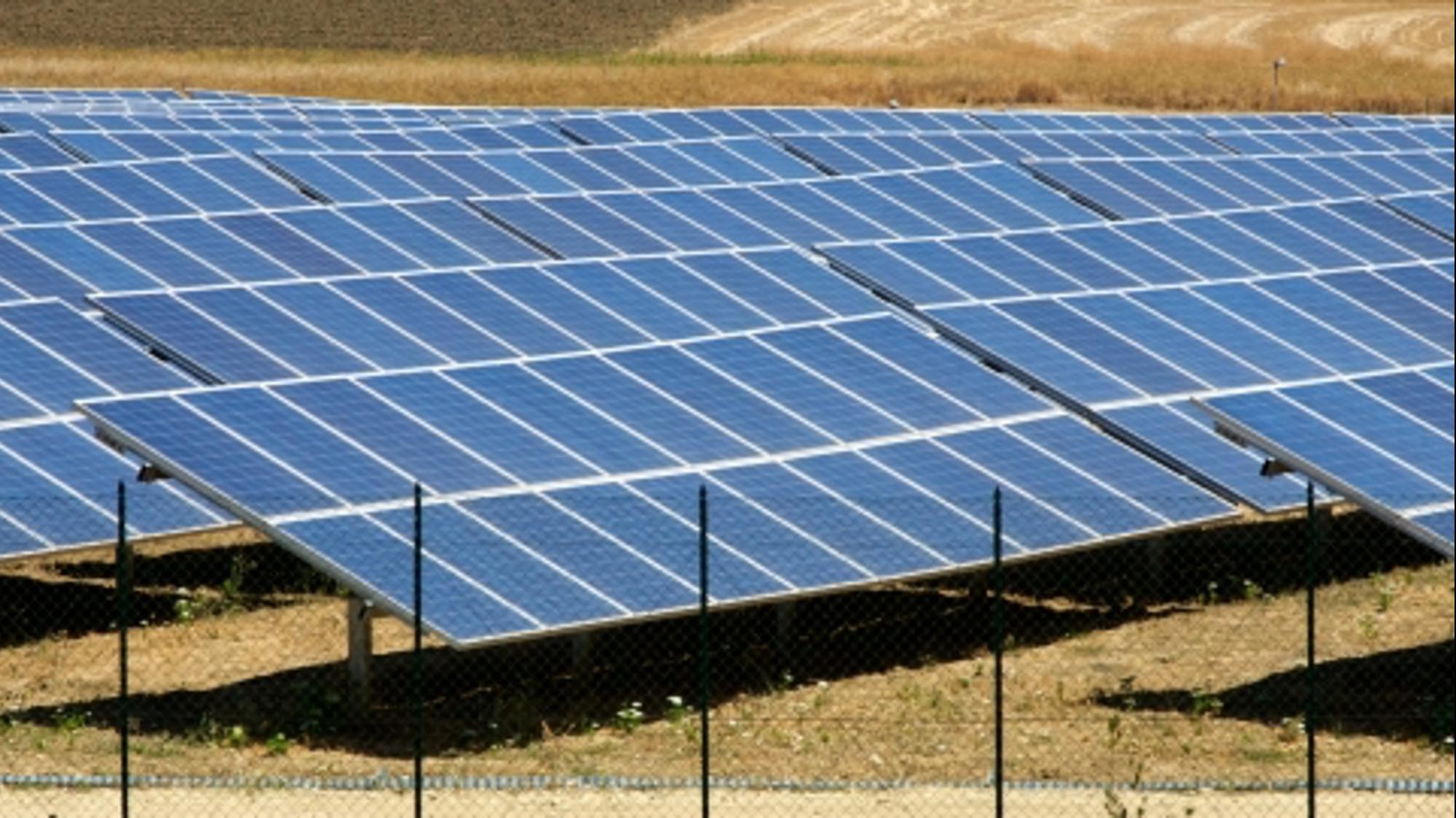
Blog post
Is the sun rising again on Spanish solar power?
Energy Blog, 8 October 2020
On paper, Spain should be at the forefront of the renewable energy revolution particularly when it comes to solar power. It is a big largely empty country, has some of the highest levels of irradiation in Europe and relatively steep conventional power prices.
You’d think that these three factors would mean that solar power in Spain would be taking off like a budget airline heading to Magaluf, you’d think that Spain would be leading the charge towards a future powered solely by the sun and you’d think all those hot dusty plains would be transformed into acres upon acres of solar farms. You’d think all of these things, but you’d be wrong.
Although it is an over-used metaphor, the Spanish renewables industry has been on a bit of a hair-raising rollercoaster journey in the last 15 years. After a promising start when the country had one of the highest installed solar capacities in the world, the industry went down a very steep decline then a flat bit but is now seemingly going back up the scary steep section. The market is heating up dramatically and the international investor market is once again looking at the Spanish solar market with maybe too much enthusiasm? So, what has changed and why are we now back on the upslope of this peculiar rollercoaster shaped market?
The climb: the boom in the Spanish solar market
At the height of the solar boom in 2009, the Spanish solar market accounted for nearly half of the total installed solar capacity in the world. In parallel with this, clever Spanish engineers led the world in developing Concentrated Solar Power (CSP) technology. The world’s first commercial CSP plant was opened in Seville and the Spanish are also at the forefront of combining solar with thermal storage systems based on molten salt. Spain still has the 3rd largest installed CSP capacity in the world.
The subsequent fall
However, after these promising beginnings, the market came hurtling downwards in that sudden way that makes your tummy churn and the reason for this of course was the U-turn in the government’s policy on renewables which occurred from 2008 onwards.
Now lots of countries reduced their support regimes for renewables in the last ten years as technology prices came down and that is how the markets are intended to operate. It’s a bit like rolling a big boulder down a hill. Governments provide the early leverage in the form of tariff support which is gradually but inexorably reduced as the market gains momentum, technology prices come down and new capacity takes off exponentially.
The key difference with Spain is that having successfully provided the early momentum, the government guillotined the tariffs almost overnight and simultaneously made the cuts retrospective rather than pay millions of euros of outstanding bills to generators. This change meant that developers who were cheerfully admiring their new projects suddenly found that their returns were much lower than anticipated, leading to some no doubt difficult telephone calls with their banks and investors.
In parallel with the retrospective changes to tariffs, the previous government also introduced a controversial “sun tax” which taxed solar panels to pay for the electricity distribution network even if they were used for self-consumption of electricity and not primarily exporting to the network. Predictably, this stifled the domestic and commercial rooftop markets which is why your holiday villa probably doesn’t have solar panels to run the air conditioning.
Abrupt, unexpected and most critically retrospective changes by governments either to support mechanisms, or taxation rates, are generally considered a very bad idea as they massively unsettle the impala like investor market and kill growth. Certainty on returns is the key to attracting long term non-recourse project finance and quite rightly the market assumed that if the government can cut returns on existing projects, they may well do the same to new ones in development. Predictably, the infrastructure fund market recoiled from Spain like a salted snail and solar installations that had peaked at 2,718 MW in 2008 fell to 44 MW in 2009. To all intents and purposes, that was pretty much that for the Spanish solar market for the next ten years and the industry spent a long time on the flat bit of the rollercoaster track with nothing much happening.
The revival
However, in 2018, the Spanish Socialist Workers Party (PSOE), led by Pedro Sanchez, was elected on, amongst other things, a strong pro-renewables platform and suddenly the fundamentals of the Spanish market are looking compelling once again. The sun tax has been repealed, the plethora of regulations regarding access to the grid have been significantly trimmed and technology prices have fallen to the point where government financial support is no longer required. Spain currently supplies over 40% of electricity demand from renewables although tellingly only 4% is from solar compared to 23% from wind. Government policy is to install 50 GW of new renewable capacity in the next ten years (against current total capacity of 98.5 GW) and this will be achieved through a combination of onshore wind and a lot more solar. 3 GW per annum of technology agnostic auctions will start this year.
These positive changes have been well received by the market, perhaps a bit too well and the Spanish market is now steeply climbing up that creaky scary bit of our metaphorical rollercoaster. In contrast to the paltry 19 MW of solar installed in 2016/17, a whopping 261 MW of new capacity was installed in 2018/19. Overall, we expect to see circa 300 – 400 MW of solar being installed per annum from 2019 onwards.
The emergence of private Power Purchase Agreements
As well as the resurgence in solar installations we are also seeing solid growth in private wire projects being developed on the back of corporate Power Purchase Agreements (PPAs). Previously non-grid-connected projects were hampered both by the solar tax and onerous regulation in Spain, but the market is now much more investor friendly. It is telling that of the 261 MW of solar capacity installed in 2018, only 26 MW were connected to the grid and the remaining 235 MW were self-contained projects powering corporate offtakers. This trend mirrors the global picture whereby the use of robust corporate PPAs is becoming the foundation for new projects instead of participating in the wholesale power markets. Corporate PPAs can offer long term price certainty and unlike the previous Spanish government, big corporates are far less susceptible to changes of heart when it comes to paying the bills.
But has the market over reacted?
Ironically, having almost killed the renewables market, then successfully revived it, the government is now worrying that the market has reacted too well to its recent resuscitation attempts and the climb is too steep. There is currently (July 2020) a backlog of more than 430 GW worth of requests from renewable projects for grid access but Spain only needs 50 GW of new capacity in the next ten years to meet its targets so too many developers are chasing too few projects.
However, a lot of commentators believe that the majority of these projects are speculative ventures because many of the grid access holders have not applied for a corresponding connection permit. To stop these speculative projects jamming up the system, the government has issued a Royal Decree which calls a halt to new applications and sets milestones for existing project applications to achieve, or they are kicked out of the process. Time will tell if these two measures are sufficient to weed out the chancers and cool what has almost overnight become a very overheated market.
So, what is the future of Spanish solar?
The healthy combination of the drastic fall in technology prices coupled with the very high level of irradiance and a newly supportive government means that Spanish merchant and corporate PPA based projects are now economically sustainable even without tariff support. This is very good news as it means the state can adopt a much more facilitative role in streamlining regulation, encouraging emerging technologies and managing power auctions. All of this seems to be working maybe too well as the investor market has decided to forgive and forget previous past policy mistakes and is returning to the country in droves. However, the new government may have over stimulated the previously moribund market and is now putting on the brakes with regards to new grid applications and trying to impose a discipline on existing ones.
In conclusion, it looks like the story of solar in Spain has provided the rest of us an interesting case study in both how to do and how not to do renewable energy policy. The rollercoaster of development activity from boom to bust to boom again illustrates how hard it is for governments to do the right thing in the right way and at the right time and how easy it is for external intervention to either kill or overstimulate markets. Somewhere in all of this is a happy medium which will deliver Spain’s renewables targets and hopefully the latest government action will achieve that tricky balance of weeding out speculative grid applications whilst not killing investor’s newfound enthusiasm for the country.
Hopefully these are just teething problems and with some of the bluest skies in Europe, a government that has learnt some painful lessons from the last ten years and ambitious targets for growth, we still expect the future of Spanish solar to be bright and sunny.

